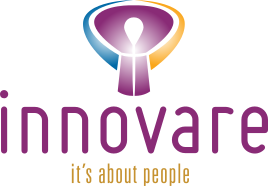Bringing independent contractors on board can transform businesses, offering unmatched flexibility and access to niche expertise. However, one crucial step is often overlooked—the onboarding process.
Why is this step so essential? Imagine beginning a role without clarity about your responsibilities, access to tools, and no formal introduction to the team. Frustrating, isn’t it? That’s the reality for many contractors when onboarding isn’t executed correctly.
This guide explores the importance of contractor onboarding and how to do it right. Whether you manage a small business or oversee HR functions, these strategies will help you prepare your contractors for success.
What is Contractor Onboarding?
Contractor onboarding refers to smoothly integrating contract workers into your organisation. Similar to onboarding full-time employees, it ensures that contractors are clear about their roles, have access to the necessary tools, and feel welcomed as part of the team.
But how does it differ from onboarding full-time staff? While full-time employees often undergo extensive orientation sessions covering company values, policies, and daily operations, contractors typically require a more focused approach.
This streamlined process prioritises essentials like project scope, timelines, and resource access, providing contractors the flexibility to thrive.
Why is Contractor Onboarding Important?
A structured onboarding process is more than just a formal procedure—it’s crucial for achieving project efficiency, enhancing contractor satisfaction, and ensuring long-term success. Here’s why it matters:
Saves Time and Resources
Contractors often work on flexible schedules, and without a standard onboarding system, organisations may find themselves repeatedly explaining the same processes. A well-defined approach saves valuable time for both your team and the contractor.
Ensures Compliance and Minimises Legal Risks
Incorrectly handling contractor classification and agreements can lead to compliance breaches and legal challenges. A robust onboarding process ensures that all contracts, tax forms, and other essential documents are properly executed and securely stored.
Fosters Cultural Alignment
Although contractors aren’t permanent employees, their contributions significantly impact business outcomes. Introducing them to your organisational culture and values can boost their engagement and productivity.
Sets Clear Expectations
Onboarding establishes the foundation for clear communication around job responsibilities, deadlines, and performance benchmarks. This clarity helps prevent misunderstandings and disputes, ensuring smoother collaborations.
How to Onboard a Contractor: A Step-by-Step Guide
Maximise the value contractors bring to your organisation by following this comprehensive onboarding process:
- Engage Cross-Functional Teams
Effective contractor onboarding often requires coordination between HR, legal, payroll, and other relevant departments. Aligning all teams ensures a seamless experience for your internal staff and the contractor.
- Define Job Responsibilities
Provide a detailed overview of the contractor’s role, project scope, and deliverables. Clear guidelines on success metrics reduce ambiguity and enhance project outcomes.
- Prepare Necessary Documentation
Ensure all contracts, tax forms, NDAs, and other critical paperwork are ready before the contractor’s start date. This will speed up the onboarding process and mitigate compliance risks.
- Classify Contractors Correctly
Proper classification is essential to avoid legal and financial penalties. Ensure compliance with local and international regulations when determining the contractor’s status based on their role and responsibilities.
- Execute the Contract
Once classification is finalised, review and sign a comprehensive contract that details the scope of work, payment terms, confidentiality clauses, and dispute resolution procedures. Both parties should agree to the terms before proceeding.
- Collect Essential Information
Gather the contractor’s contact details, banking information, and identification documents. These are necessary for payroll, compliance, and communication throughout the contract.
- Set Up Payroll Processes
Managing contractor payments can be complex, especially when working with international contractors. Implement a reliable payroll process that ensures accurate and timely payments while meeting tax and compliance requirements.
Establish a clear payroll schedule to avoid delays, including deadlines for timesheet submission and approval processes. During onboarding, contractors should also be informed about payment timelines and methods.
- Document Insurance and Social Security Coverage
Where applicable, address insurance needs, including liability insurance or professional indemnity coverage. Contractors subject to social security contributions or national insurance schemes should ensure these are documented and communicated clearly.
- Provide Access to Tools and Systems
Equip contractors with the necessary tools and access to software, communication platforms, and project resources. Preparing these systems in advance ensures productivity from day one.
- Introduce Project Details
Hold a project-specific onboarding session to explain objectives, timelines, and expectations. Introduce the contractor to key team members and clarify performance indicators.
- Schedule Regular Feedback and Check-Ins
Plan periodic check-ins to track progress, provide feedback, and address concerns. Consistent communication strengthens collaboration and keeps contractors aligned with project goals.
Contractor Onboarding Checklist
A comprehensive checklist is essential to ensure nothing gets overlooked during onboarding. Here are the key elements to include:
- Verify Contact Details: Collect all necessary contact information for payroll, communication, and record-keeping purposes.
- Compile Tax Documentation: Ensure all required tax documents, such as tax identification numbers or relevant forms, are collected to meet compliance regulations.
- Secure Legal Agreements: To safeguard your business, prepare and store all contracts and legal agreements, including non-disclosure agreements (NDAs) and intellectual property (IP) agreements.
- Document Insurance and Social Security Requirements: Clarify any required insurance coverage and address social security obligations where applicable.
- Provide Tool Access: Grant contractors access to the necessary systems, software, and communication platforms to get off to a productive start.
- Establish a Payroll Schedule: Share details about timesheet submission deadlines, approval processes, and payment dates to ensure smooth payment operations.
- Share an Onboarding Resource Guide: Offer a resource guide outlining common queries, company policies, project expectations, and essential procedures.
What About Offboarding?
Offboarding is as crucial as onboarding when managing contractors. A structured offboarding process ensures a smooth transition and protects your business’s interests. Key offboarding steps include:
- Finalizing Payments: Verify and process all outstanding payments, ensuring the contractor has submitted their final timesheets for approval.
- Revoking Access: Remove the contractor’s access to company systems, software, and confidential information to maintain data security.
- Conducting Exit Interviews: Gather feedback on their experience to improve future onboarding and collaboration processes.
- Retrieving Company Assets: If applicable, collect company-issued equipment, tools, or materials used during the contract.
Managing Your Global Team with Innovare
Navigating the complexities of onboarding contractors worldwide can be daunting, but Innovare makes it simple. Whether you’re hiring full-time employees or independent contractors, our solutions eliminate the need to establish a local entity.
Innovare provides a seamless approach to global contractor management by ensuring compliance, enabling smooth payroll processing, and delivering efficient onboarding solutions. With 24/7 support and automated payroll systems, building and managing an international team has never been easier.
Conclusion
A structured and thoughtful contractor onboarding process lays the foundation for success. It helps new hires integrate smoothly, equips them to deliver effectively, and fosters stronger working relationships.
Equally important is offboarding, which ensures a seamless transition and protects your business once a contractor’s engagement ends.
Innovare takes the hassle out of contractor onboarding and offboarding, empowering your business to scale globally while maintaining compliance and efficiency.
Ready to elevate your contractor management experience? Contact Innovare today to discover how we can support your global workforce management needs!


